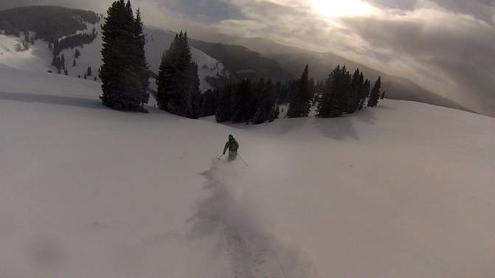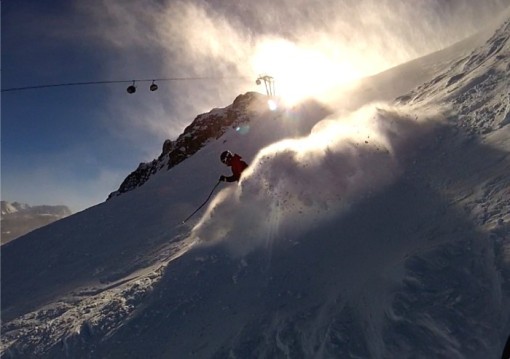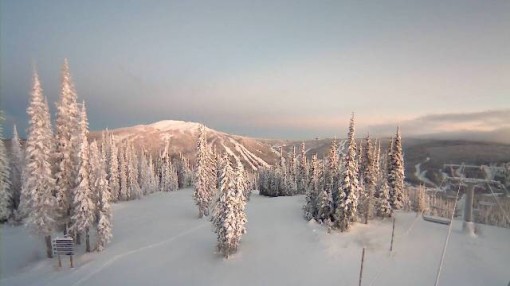Who got the most snow in North America in 2012-13?
Guest feature by Tony Crocker, 29 July 2013
2012-13 was overall well below average in snowfall, 89% of normal. In general, the snowiest areas in Canada and the Northwest were only modestly above average.
However, skier visits rebounded sharply from the depressed levels of 2011-12 because December was the big snow month in most regions.
Colorado
Colorado was the exception to the above generalisation, with some areas starting even slower than last year. Copper Mountain, Crested Butte and Telluride were only 1/3 open at New Years’, and Arapahoe Basin was less than half open in early February.
I-70 and the Front Range had very high late season snowfall (A-Basin closed June 2) and finished up at 89% of normal. Vail had 7.7m (84%) and Copper Mountain 6.5m (91%). Steamboat led the region with 9.7m (100%). The Southwest was overall 87% of normal with 5.9m at Aspen (92%) and 6.5m at Taos (98%).
Utah
Utah snowfall was 76% of normal, but a strong December got the Cottonwood Canyons in full operation mid-month and the Park City areas by Christmas. January-March were about 2/3 of normal but April was above average. Alta as usual had the most snow with 11.0m (80%).
California
California had in some places its second snowiest December but the driest season ever after New Years’, about 1/3 of normal, resulting in a 64% season overall. Squaw Valley had 5.6m (59%), Heavenly 5.8m (71%) and Kirkwood 8.1m (67%).
Mammoth had the best quality Sierra season at 7.6m (83%), because some of the early season storms were all snow there but partially rain at Tahoe. Some lower Tahoe areas lost cover by late March and all were closed by late April, while Mammoth’s higher altitude preserved the early snow well into spring and was open until June 1.
US Northern Rockies
The US Northern Rockies were overall 85% of normal. Snowfall was highest in December, so all areas enjoyed a strong holiday season. Every month thereafter was below average, but not the extreme drought of California.
Relative to normal the highest snowfall was nearest Canada (Schweitzer 7.1m, 99%) and the lowest farther south (Jackson Hole, 7.3 m, 78%). As usual, Grand Targhee led the region with 10.3m (86%).
The Northeast
The Northeast was 96% of normal. The first major storms arrived just in time for Christmas. Conditions then deteriorated with rain and thaw in January, but late February and March had above average snow and good conditions.
Jay Peak had the most snow (7.8m, 94%). Snow was below average in Vermont (Killington 5.3 m, 85%) but close to average elsewhere (Sugarloaf 4.6m, 104%, Le Massif 5.9m, 100%).
Interior Western Canada
Interior Western Canada was the strongest region in North America at 110% of normal. December was big, but the later months were closer to average than in most other regions.
Sunshine Village had 8.1m, 126% being the highest relative to normal for any area in 2012-13. The most snow in the region was at Whitewater (10.7m, 106%) and Fernie (10.2 m, 107%).
Pacific Northwest
The Pacific Northwest was overall close to average at 102%. December was huge, January and February below average, and spring above average.
Relative to average snowfall was highest in the north (Whistler 10.9m, 109%) and lowest in the south (Mt. Bachelor 8.9m, 91%). Mt. Baker easily led North America in snowfall with 17.7m, though only slightly above average at 106%. Alyeska was second at 14.3m and 108%.
Tony Crocker is an award-winning snow-sports journalist and founder of www.bestsnow.net - the definitive guide to weather and snowfall patterns in North American Ski resorts.
Read more about him here





